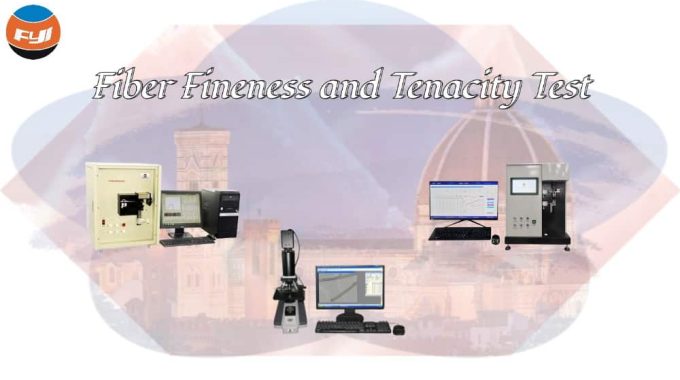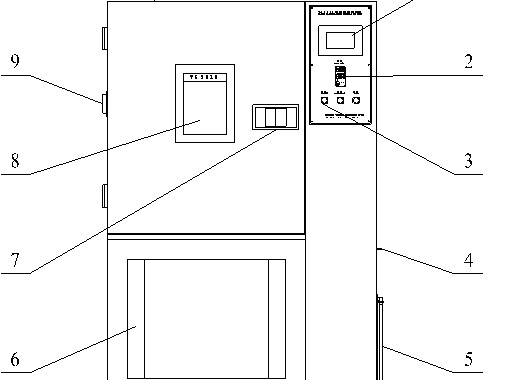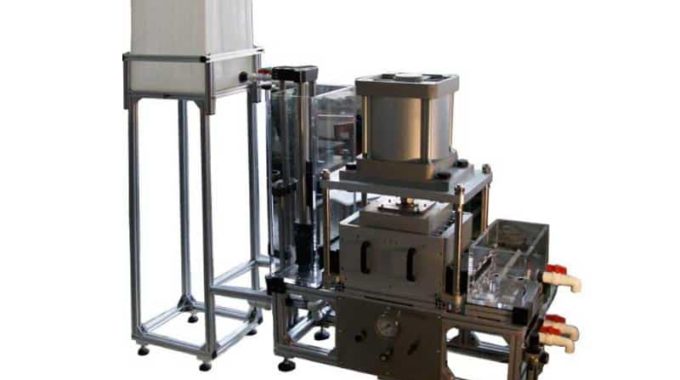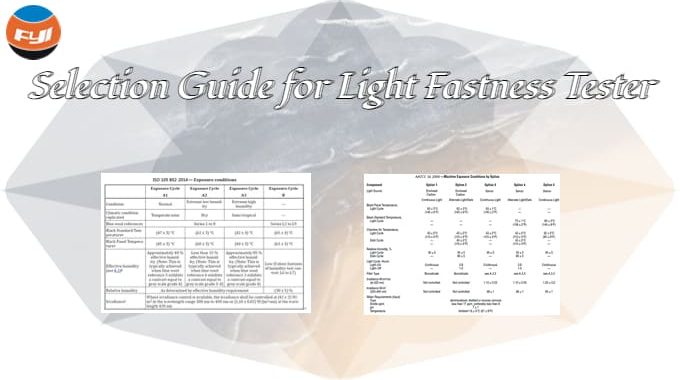
Selection Guide for Light Fastness Tester
Contents
What is color fastness to light?
As we all know, textiles are usually exposed to light during their use life, and light has the potential to destroy the dye, resulting in the effect of “fading,” which causes colored textiles to change color, usually light or dark. We call the degree of resistance to the fading effect of light as color fastness to light. The color fastness to light is a very important index in physical testing of textiles. And light fastness tester is the machine for the test.
How to test the color fastness to light?
The test method of color fastness to light is exposing a set of reference samples along with the specimens at the same time and under the same conditions; the color fastness to light is assessed by comparing the change in color of the test specimen with that of the reference materials used.
Color fastness to light can also be divided into: sunlight (which can be exposed to several different colors of sunlight) and artificial light (xenon arc or carbon arc). In order to control the test conditions in the laboratory and speed up the testing process, the labs generally use artificial light source, so they need a color fastness tester which can simulate and strengthen the natural environmental factors such as the light irradiance, humidity, temperature, light and dark cycle and spray etc.
At present, ISO 105 B02 and AATCC 16 are the two commonly used standards to test the textiles’ color fastness to light internationally. Below the writer give the key control parameters of two test methods.
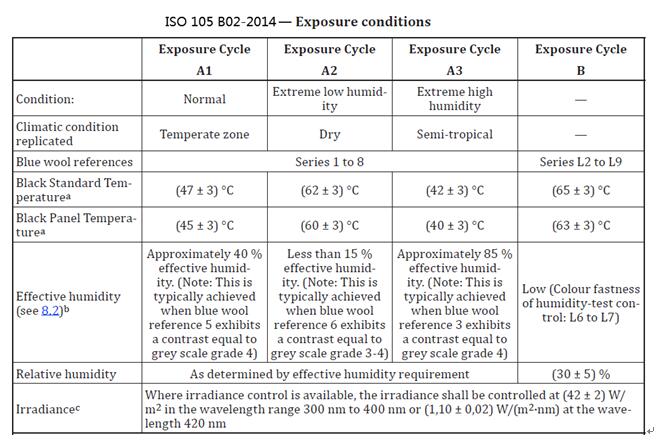

Types of light fastness tester
There are three kinds tester for textile color fastness to light if dividing by light source: The tester with xenon arc lamp as light source, the tester with carbon arc lamp as light source and the tester with mercury lamp as light source.
Xenon arc lamp tester
Xenon lamp has been used as an artificial light source for the color fastness test for a long time, because the spectral power distribution curve of xenon arc lamp is close to sunlight, and at the same time, the ultraviolet, visible and infrared wavelength generated by xenon arc lamp are the closest to sunlight at present.
The xenon arc tester also have two types according to different cooling method for xenon arc lamp, air cooled and water cooled models.
The most popular air cooled xenon arc lamp is rotary drum model. Since only one xenon lamp can be placed in the middle of the drum, and the test methods have strict requirements on the light energy on the specimens, the test area of the rotary drum air-cooled model tester is limited. Now large volume flat plate type air cooled xenon arc lamp tester is be loved by many users; It uses three separate xenon lamps, suitable for rubber, plastic, leather, wood-based board, fabric and other materials of light and weather aging test, especially more suitable for irregular shape and size material.
Water cooled xenon lamp tester have a complex construction than air cooled model, which uses medium to high purity cooling water to circulate between the xenon lamp and the inner filter and between the inner and outer filters to carry away heat. Due to the use of high-power water cooled xenon lamp, drum radius increases, test area increases significantly; but at the same time, the calibration and maintenance becomes more difficult than air cooled model, and also the expense of purchase and maintenances has greatly increased.
So despite the advantages of water-cooled model, many testing institutions and enterprises based on cost considerations or small testing characteristics, they will select an air cooled tester.
Carbon arc lamp tester
Carbon arc lamp is the earliest light source for color fastness to light test in textile industry. Carbon arc lamp is divided into two kinds, one is closed carbon arc lamp, the other is solar carbon arc lamp. Both of these carbon arc lamps are used in early equipment, the former is initially used for textile light resistance test, the latter is initially used for coating light resistance test. The luminescent body of the enclosed carbon arc lamp is a group of carbon rods. However, the spectral energy distribution (SPD) of the arc light emitted by carbon rods is quite different from natural sunlight. There is neither short wave ultraviolet radiation nor high intensity energy of sunlight between 400-800nm in natural sunlight. The SPD matching between solar carbon arc lamp and natural sunlight is improved, but the spectral distribution between the two is still different between 50nm and 350nm. Therefore, in general, the correlation between the carbon arc lamp test results and the actual weather resistance of the product is poor. So the carbon arc lamp has is not so popular compared with xenon arc lamp tester.
Mercury lamp tester
Mercury lamp’s spectral lines are mainly in the ultraviolet part, the wavelength concentrate around 365mm. It is mainly used for outdoor products durability test.
What aspects need to pay important attention when choosing a light fastness tester
Which test method you will adopt for your test
First, you should clearly know which test method will adopt, for example, even in one test method, there are five options in AATCC 16, there are different requirement in light source, black panel temperature, cabinet temperature and relativity humidity, and irradiance from each option, different option has different require in hard and software control system of the tester. Now the xenon arc lamp tester can afford the most standard test methods.
The testing quantity demands
The testing quantity demands or test area will directly decide which type. This consideration involves air or water cooled xenon arc lamp model choose, if you need large quantity test and have an adequate budget, you can absolutely choose a water cooled model; And otherwise, you can select a rotary air cooled model or a flat plate air cooled model. About the water cooled and the air cooled model, if you read the standards carefully, you will find that the standards clearly point out that the air cooled or water cooled lamp have nothing to do with the test results, but strict requirements on the key parameters affecting the test effect of color fastness to light, such as irradiance, black panel temperature, chamber air temperature and relative humidity and their control technology.
The machine’s control system configuration and control technology
The factors that affect the color fastness of textile include internal and external ones. The internal factor is mainly caused by different properties of textile dyes. The light resistance of textiles of the same color may be very different due to the use of different dyes, it has little to do with the test method. External factors include many aspects, such as the choice of light source, spectral energy, temperature and relative humidity and so on. It is mainly external factors that have direct influence on the stability and reproducibility of test results. And both ISO and AATCC standard has strict requirement on light irradiance, temperature and humidity, so the machine’s control system on above is the mainly factors need to be considered. In the market, some economic arc lamp testers has no irradiance and humidity control system, so the buyer need figure out the detailed configuration.
The irradiance of light source and filter system: The irradiance directly affects the decomposition rate of textile dyes and thus affects the color fastness of textiles. In the current standard, the control of illumination intensity and total radiation amount mostly adopts the control of a certain point, 1.1W/m2 at 420nm or a spectral band in the spectrum, the irradiance of 42W/m2 in the wavelength range of 300nm-400nm. The output power of the xenon lamp and the aging of the filter will directly affect the change of the light source spectrum.
Control system of the temperature: As an important index of the light fastness system, the change of temperature will inevitably cause the change of the chemical index of the specimens. The combination of light and high temperature will lead to accelerated degradation of textiles. Therefore, the test of textile color fastness to light should not only consider the light band and irradiation intensity, but also the surface temperature of the specimens and the ambient temperature.
There are two types of black-coated temperature sensor commonly used, one is the non-insulated chalkboard, known as the black panel thermometer (BPT), the other is a blackboard mounted on an insulated plastic sheet, known as the black standard thermometer (BST).
The relative humidity control system: This system consists of compressor and humidification.
Calibration system especially for irradiance: As we all know, in the lifetime of lamp, its irradiance value may come down by 5~15%, and this case will directly affect the change of the light source spectrum. For irradiance calibration, there are some solutions as below
A:Standard lamp
Use a standard lamp to do calibration; there is a strict and accurate correspondence between the power and irradiance of the standard lamp. The irradiance can be known by measuring the power of the standard lamp. Because this method depends on the relationship between the power and irradiance of standard lamps, and the relationship between the power and irradiance lamps will change after aging, the life of standard lamps is relatively short, and the price is high.
B:Irradiance meter
Use irradiance meter to do calibration, it is easy to understand. The irradiance meter cost is low than standard lamps and it can use for a long time, just need recalibrate the irradiance meter periodically.
C: Standard blue wool
Use standard blue wool fabric to do calibration, put standard blue wool fabric in the machine, within 21 hours light-on continuous operation, the color charge of this blue wool fabric is step 4 if compare with AATCC grey scale. In this way, you can also verify your machine if it is working properly. For more details, please refer to AATCC-16
D: Optical spectrometer method
This is the most accuracy calibration method for irradiance, which we calibrate for every YG611M before delivery. If customer prefer to this accuracy method, they should buy an optical spectrometer
Normally, users will select mothed B# or C# calibration method.
The test criteria and independent tests indicate that the test results are independent of the tube cooling mode and sample stand structure, and that the comparability of the test results depends on precise control of key parameters in accordance with exposure conditions specified in the same standard. Users should consider the technical advancement, purchase and use cost of the machine, as well as the convenience of use and maintenance according to their own situation when choosing the sun fastness testing machine.
